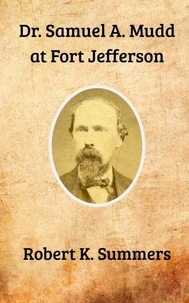This book profiles each of the soldiers who served in Maryland's 19th Infantry Regiment, U. S. Colored Troops, during the American Civil War. The profiles are based on the soldiers' military and pension files at the U. S. National Archives in Washington, D. C.?The 19th Regiment saw action in Virginia at the battles of Weldon Railroad, Poplar Grove Church, Bermuda Hundred, Chapin's Farm, Hatcher's Run, and Petersburg.
The Regiment was in the first wave of Union soldiers entering and capturing Richmond on April 3, 1865. At the same time in nearby Appomattox, Virginia, Confederate General Robert E. Lee surrendered his army to Union General Ulysses. S. Grant, and the great Civil War was over.?But military service was not over for the men of the 19th Regiment. Their term of enlistment was three years. The men of the 19th Regiment had served barely half their three-year enlistment when the war ended.
Instead of disbanding the regiment as the men had hoped, the regiment was sent to Texas as an occupation force to preserve order in the formerly Confederate state, and to protect the rights of the former slaves in that state. The 19th Regiment was finally disbanded on January 15, 1867 at Brownsville, Texas, and the men returned home to Maryland, free men at last.?Two hundred sixty-eight of the original 1, 000 men of the 19th Regiment organized at Camp Stanton died from all causes before the regiment was disbanded.
Twenty-three were killed in action at Petersburg's Battle of the Crater. The other 245 died of disease. The main killers were cholera, chronic diarrhea, measles, pneumonia, scurvy, smallpox, and typhoid fever. Many of those who survived their service with the 19th Regiment suffered for the rest of their lives from the effects of diseases and injuries contracted during their service.?The entire number of men enlisted and commissioned in the U.
S. Colored Troops during the Civil War was 186, 097. They served in 120 Infantry Regiments, 12 Heavy Artillery Regiments, 10 Heavy Artillery Batteries, and 7 Cavalry Regiments. By the time the war was over, 68, 178 of these brave men were lost from all causes.
This book profiles each of the soldiers who served in Maryland's 19th Infantry Regiment, U. S. Colored Troops, during the American Civil War. The profiles are based on the soldiers' military and pension files at the U. S. National Archives in Washington, D. C.?The 19th Regiment saw action in Virginia at the battles of Weldon Railroad, Poplar Grove Church, Bermuda Hundred, Chapin's Farm, Hatcher's Run, and Petersburg.
The Regiment was in the first wave of Union soldiers entering and capturing Richmond on April 3, 1865. At the same time in nearby Appomattox, Virginia, Confederate General Robert E. Lee surrendered his army to Union General Ulysses. S. Grant, and the great Civil War was over.?But military service was not over for the men of the 19th Regiment. Their term of enlistment was three years. The men of the 19th Regiment had served barely half their three-year enlistment when the war ended.
Instead of disbanding the regiment as the men had hoped, the regiment was sent to Texas as an occupation force to preserve order in the formerly Confederate state, and to protect the rights of the former slaves in that state. The 19th Regiment was finally disbanded on January 15, 1867 at Brownsville, Texas, and the men returned home to Maryland, free men at last.?Two hundred sixty-eight of the original 1, 000 men of the 19th Regiment organized at Camp Stanton died from all causes before the regiment was disbanded.
Twenty-three were killed in action at Petersburg's Battle of the Crater. The other 245 died of disease. The main killers were cholera, chronic diarrhea, measles, pneumonia, scurvy, smallpox, and typhoid fever. Many of those who survived their service with the 19th Regiment suffered for the rest of their lives from the effects of diseases and injuries contracted during their service.?The entire number of men enlisted and commissioned in the U.
S. Colored Troops during the Civil War was 186, 097. They served in 120 Infantry Regiments, 12 Heavy Artillery Regiments, 10 Heavy Artillery Batteries, and 7 Cavalry Regiments. By the time the war was over, 68, 178 of these brave men were lost from all causes.

 , qui est-ce ?
, qui est-ce ?